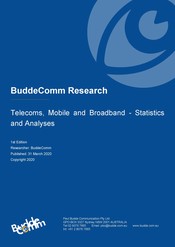Australia - National Broadband Network - Coalition Opposition Policies 2011

Last updated: 5 Apr 2012 Update History
Report Status: Archived
Report Pages: 16
Analyst: Paul Budde
Synopsis
While it was in government (1996-2007) the Coalition’s telecoms policy was focused on the privatisation of Telstra, and during that time scant attention was given to the need for universal broadband and competition; because of this Australia fell behind its international trading partners in affordable high-speed broadband services.
Towards the end of that period it started to develop policies to address these issues, a key element of which was a $1 billion investment in a regional wireless broadband plan, known as OPEL. At that point it also began to warm up to the idea of the structural separation of Telstra, but no firm policies were announced.
The Labor Opposition went into the 2007 election with a more substantial plan, promising a $4.7 billion investment into a National Broadband Network. Partly due to this Labor won that election.
Subsequently the Coalition, now in opposition, withdrew from the industry discussion that emerged around the Labor Government’s plans for a national broadband network (NBN). The industry was extremely disappointed at the Coalition’s lack of participation but it could not be persuaded, choosing simply to oppose the NBN in its entirety. Increasingly, the message from the Federal Opposition was to ‘kill the NBN at all costs’.
It was only after it lost the 2010 election that it, still reluctantly, became involved in the debate. By that time, however, it was too little too late, as the government, together with the regulators and the industry (including Telstra), had already arrived at a collective agreement on the future of Australian telecommunications.
Finally, in August 2011, the Coalition delivered a more substantial plan, an outline and analysis of which is contained in this report.
Related Reports
- Australia - Telecoms, Mobile and Broadband - Statistics and Analyses
- Australia - Data Centre Market
- South Pacific Islands - Telecoms, Mobile and Broadband - Statistics and Analyses
- Samoa - Telecoms, Mobile and Broadband - Statistics and Analyses
- Papua New Guinea - Telecoms, Mobile and Broadband - Statistics and Analyses
- New Zealand - Telecoms, Mobile and Broadband - Statistics and Analyses
- French Polynesia - Telecoms, Mobile and Broadband - Statistics and Analyses
- New Caledonia - Telecoms, Mobile and Broadband - Statistics and Analyses
- Vanuatu - Telecoms, Mobile and Broadband - Statistics and Analyses
Share this Report
TMT Intelligence
A platform to scale your intelligence tasks
Monitor critical insights with our AI-powered Market Intelligence Platform gathering and analyzing intelligence in real time. With AI trained to spot emerging trends and detect new strategic opportunities, our clients use TMT Intelligence to accelerate their growth.
If you want to know more about it, please see:
Research Methodology
BuddeComm's strategic business reports contain a combination of both primary and secondary research statistics, analyses written by our senior analysts supported by a network of experts, industry contacts and researchers from around the world as well as our own scenario forecasts.
For more details, please see:
More than 4,000 customers from 140 countries utilise BuddeComm Research
Are you interested in BuddeComm's Custom Research Service?
Hot Topics
News & Views
Have the latest telecommunications industry news delivered to your inbox by subscribing to BuddeComm's weekly newsletter.